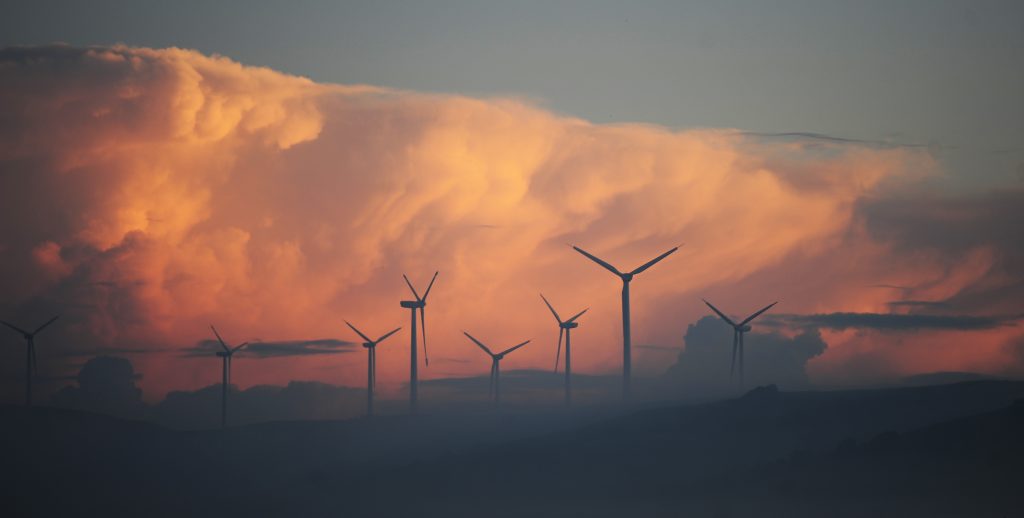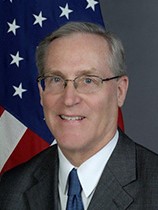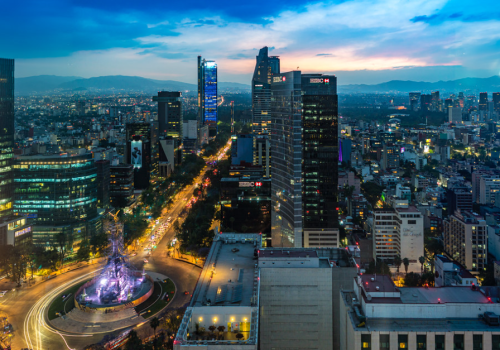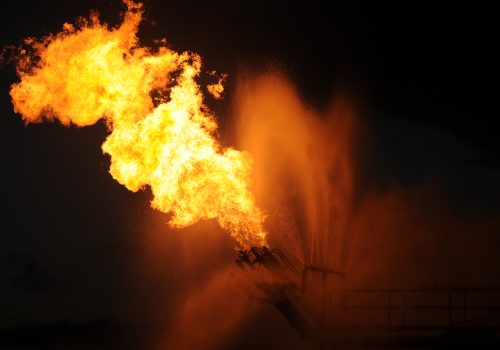The challenges of financing and investment for climate change in emerging and developing economies are coming to a head as the UN Climate Change Conference, known as COP28, in Dubai, gets underway starting November 30.
Advanced economies are not meeting their pledges or are lagging in their disbursements. They are directing large subsidies to their own domestic energy transitions; providing little in new pledges to the Global Green Climate Fund; and stalling payments into the loss and damage fund endorsed at COP27 last year.
To make matters worse, in the face of the continuing debt crisis in many low-income countries, borrowing costs for project finance have risen with higher interest rates, and banks have tightened their loan requirements.
This piece focuses on the need to improve the enabling environment, especially the policy, regulatory, and market frameworks, in emerging and developing economies to mobilize greater climate finance and investment and reduce actual and perceived risks to investors.
The following three propositions lay out what’s needed:
- Financing from governments and international financial institutions is inadequate to meet investment needs, and emerging and developing economies must focus on attracting more private sector investment.
- Advanced economies should adjust their assistance and financing priorities and give greater attention to partnering with emerging and developing economies to build policy, regulatory and institutional frameworks that are sustainable and can attract private investment.
- Beyond partnering with advanced economies, emerging markets and developing countries must take additional steps to improve their investment climate for clean energy projects.
Debt and climate investment needs in emerging and developing economies
The investment needed to accelerate the energy transition in emerging markets and developing countries is large. The annual concessional funding for clean energy that these countries require will need to reach between $80-100 billion by the early 2030s, according to the International Energy Agency’s updated Roadmap to Net Zero Emissions by 2050.
Yet, emerging markets and developing countries, especially low-income countries, are struggling with high debt loads. The IMF Financial Stability Report recently concluded that 56 percent of low-income countries and 25 percent of emerging market countries are in or at high risk of debt distress.
Under increasing pressure, international financial institutions (IFIs) have made strides in increasing their climate finance pool. The World Bank Group reported a record $38.6 billion in climate finance for the year ending July 1, 2023, while overall multilateral development bank (MDB) climate finance increased from eighty-two billion dollars in 2021 to nearly hundred billion dollars in 2022, with about sixty billion dollars of that going to low- and middle-income countries. Finance for mitigation, much of it for clean energy, constituted 63 percent or thirty-eight billion dollars of the flows to low- and middle-income countries. Investment loans ($36.8 billion) and policy-based finance ($8.4 billion) were the largest types of financing in the overall MDB climate portfolio. Given the often-high investment risks, IFIs play an important role in catalyzing private investment through loans and guarantees; an estimated sixty-nine billion dollars in private climate finance were leveraged globally in 2022.
Assessing financing and investment risks
Development banks and private investors alike face an array of energy and climate investment risks in emerging markets and developing countries. Some of these risks are common political, regulatory, economic, and financial ones, while others vary depending on the specific characteristics of the technology or country involved.
The IEA World Energy Outlook 2023 presents a generic framework that identifies the risk level (high, medium, low) in three areas (policy and regulatory, supply chain, and financial) for nine clean energy technologies. Bloomberg New Energy Finance’s Climatescope review has long focused on key elements of the policy environment of countries and scores individual markets in terms of their overall attractiveness and progress in luring clean energy investment. It comparatively assesses the electric power markets of countries on whether they have in place the following six features: targets, auctions or tenders, import tariffs, net metering, feed-in-tariffs, and value-added tax reductions or exemptions.
A focus on the regulatory institutions and their effectiveness is a common dimension of risk assessment tools. RISE (Regulatory Indicators for Sustainable Development) is a robust scheme developed by the World Bank that tracks regulatory and financial incentives, network connection and use, carbon pricing and monitoring, counterparty risk, and credit worthiness of utilities among other indicators.
The RISE 2022 report sees uneven progress over the 2019-2021 period and backsliding in utility credit worthiness. A parallel World Bank effort called the Global Electricity Regulatory Index (GERI) is diving deeper into regulatory performance in considering regulatory governance and regulatory substance factors.
Country surveys using the above frameworks all highlight the basic weaknesses in the clean energy investment environment in emerging and developing countries. BNEL’s Climatescope estimates that in 2021 renewable energy asset finance in emerging and developing counties other than China was about forty-nine billion dollars compared to over three hundred billion dollars globally. But this was highly concentrated, with over 80 percent in fifteen countries. Africa lags other regions and even its best performers—Tanzania, Malawi, Nigeria, South Africa, and Zimbabwe—were not in the top ten developing countries globally.
Enabling environment reform priorities
The response to these internal developing country market constraints has seen new proposals for global climate funding and investment guarantee and enhanced political and economic risk insurance mechanisms such as the US Energy Transition Accelerator and the World Bank’s Scaling Climate Action by Lowering Emissions. These de-risking structures from the advanced countries and IFIs have their place. However, there is too little focus on building the regulatory and institutional capacity in recipient countries that can ensure that project investments are sustainable, efficient, and attractive to private investors.
To address this challenge, the three-pronged approach presented by International Monetary Fund Deputy Managing Director Bo Li in this February blog is useful. This framework includes:
1. Smarter regulation, price signals, and well–targeted subsidies adapted to each country’s unique fiscal and macro-financial characteristics.
2. Strengthened public financial management and public investment management, building the capacity to identify, appraise, and select good quality projects, including fiscal risk mitigation.
3. A revamped financial architecture to include flexible national and regional programmatic as well as project approaches to risk-mitigation and mobilizing private investment.
One approach, the Just Energy Transition Partnerships (JETP), is beginning as a collaborative effort among the United States, Germany, and other advanced countries together with the IFIs to engage with key coal-dominant developing countries, such as South Africa, Indonesia, and Vietnam, in mobilizing investment and overcoming key obstacles. Policy and program approaches to support regional grids and energy trading approaches with groups of nations such as the Association of Southeast Asian Nations or sub-regions in Africa are also prospective.
COP28 outcomes
As nations take stock of national and global efforts to address climate change and finance the clean energy transition at COP28, the dialogue should elevate the issue of how to improve the enabling environments in emerging markets and developing countries. A greater onus should be placed on these countries, as well as the advanced nations in their financing commitments, to make progress in improving the governance of economies and energy systems in recipient countries.
Although greater capital and technical assistance resources (both public and private) from developed countries are essential, a reorientation of some of this funding to augment enabling environment reform efforts is needed. The IMF’s new Resilience and Sustainability Trust, with its packaging of policy reforms, capacity development, and financing arrangements, represents an important step in this direction.
For the United States, the Biden administration has tried to increase international climate funding and achieve the president’s 2021 pledge of $11.4 billion by 2024. The administration’s FY24 request for international climate programs was $4.3 billion, a substantial increase over the $2.5 billion requested for FY23. But Congress has not gone along, appropriating only one billion dollars for FY23. And the prospects for increasing FY24 appropriations are not promising.
US government departments and agencies are working hard to play a leadership role in tacking the global climate crisis and in COP28. It is essential that Congress approve funding levels reflecting this imperative, including the requested $1.1 billion for clean energy that would provide the State Department and the US Agency for International Development with the resources needed to work with emerging and developing economies in improving their enabling environments.
Robert F. Ichord, Jr. is a nonresident senior fellow at the Atlantic Council Global Energy Center
Meet the author
Related content
Learn more about the Global Energy Center

The Global Energy Center develops and promotes pragmatic and nonpartisan policy solutions designed to advance global energy security, enhance economic opportunity, and accelerate pathways to net-zero emissions.
Image: The sun sets on wind turbines in Tunisia (Credit: Samy Snoussi, Shutterstock)





